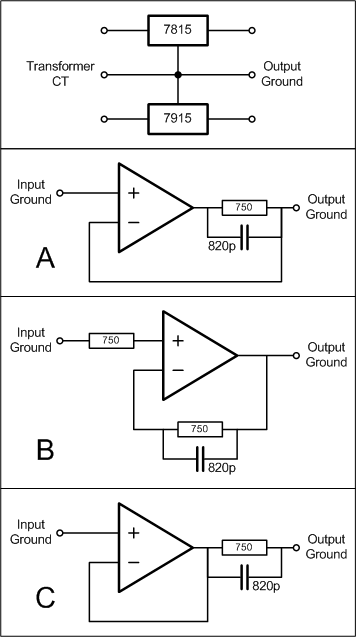I've searched google and DIY section here a few hours, but couldn't find the solution I'm looking for.
I would like to build a headphones amplifier, with AC power, using dual voltage power supply, with 78xx/79xx or 317/337 combo (or other regulators). Will use Transformer with center tap.
My question is, what is 'the best simple way' to connect the input ground (from source) with the power supply output ground, that provide isolation between the input and output ground?
I would like to have some isolation between input ground and output ground like what I see in PPA project, but since I'm using dual voltage power supply with Transformer CT as the ground, I would like to save cost from building another ground channel amplifier with buffers.
I'm looking for some advice. I've thought a few ways, not sure if any of them will works well. Please advise which way from the picture below, option A, B, and C, do you think is the better way to connect input ground to the output ground. Or if you have a better way, I really appreciate if you could share it with me.
Tx!


I would like to build a headphones amplifier, with AC power, using dual voltage power supply, with 78xx/79xx or 317/337 combo (or other regulators). Will use Transformer with center tap.
My question is, what is 'the best simple way' to connect the input ground (from source) with the power supply output ground, that provide isolation between the input and output ground?
I would like to have some isolation between input ground and output ground like what I see in PPA project, but since I'm using dual voltage power supply with Transformer CT as the ground, I would like to save cost from building another ground channel amplifier with buffers.
I'm looking for some advice. I've thought a few ways, not sure if any of them will works well. Please advise which way from the picture below, option A, B, and C, do you think is the better way to connect input ground to the output ground. Or if you have a better way, I really appreciate if you could share it with me.
Tx!





